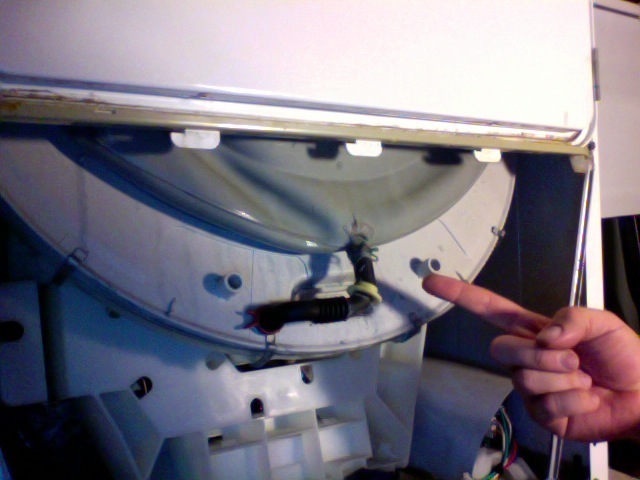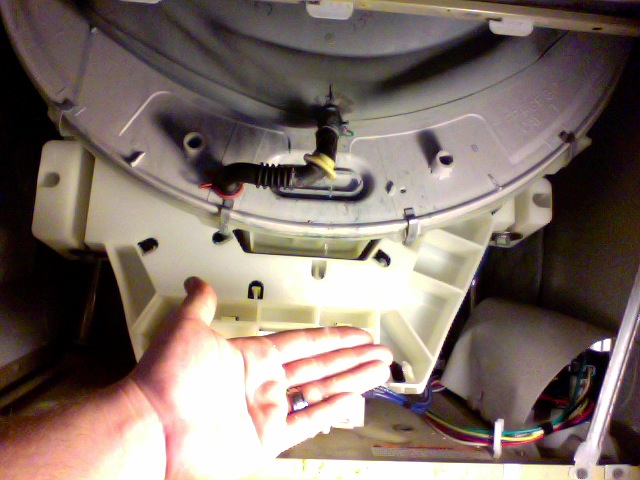The Maytag didn’t cotton to my Goop repair as the seal flexed too much and the adhesion to the seal itself was fairly low. Stripped it all off by hand, unsurpisingly it all came off in one big chunk. During the test load it still only leaked about 10 drops instead of the 1.5 liters that it did before.
Having forseen this, I picked up a tube of Permatex waterpump gasket silicone RTV – p/n 22071. Put a tiny dab in the actual split in the seal and a very light coating on the outside. Let it cure overnight and a hot water & bleach test run today showed it’s holding fine.
Lightly sprayed the rust spots inside of the cabinet with some Liquid Wrench Super Lube and buttoned it back up.
Wound up using Automotive Goop (not Household, as I initially thought) on the Maytag. About to go try a new load to make sure it held. It went on pretty well and smoothed out well overnight, despite how sticky it was when being applied with gloved hands.
My $15 Zenni Optical glasses also came apart. Again. For the third time. Disassembled all the threaded connectors, applied high strength (red) threadlock compound and reassembled. We’ll see how well they hold up.
In this case, my Maytag Neptune washing machine. It’s leaking water. Just so the googles will find it, how about Maytag Neptune Washer Leak and Water leaking from Maytag Neptune front loading washer. There, I feel better about it. I also feel pretty good about diagnosing broken appliances while wearing just underwear.
This guy seems to leak water from two main places:
- The inside door panel will leak like a sieve if you try to wash a rug in it, because a rug (fairly stiff) will scratch the everliving shit out of the door panel (relatively soft plastic). Don’t do this. If you do, it can be patched by hand-laying up a couple layers of fiberglass. We did this repair about 3 years ago with some generic autoparts store fiberglass cloth and JB Weld as the resin.
- There is a circular diaphragm that acts as the seal betwixt the door frame and the drum frame. At the bottom of this is a drain hose to permit any water that falls in there to drain back into the drum. The interface of the seal and the hose is prone to cracking. Ours did and was patched about 3 years ago with JB Weld. Unfortunately this area is fairly highly stressed and the rigid epoxy doesn’t move with the rubber seal (I assume EPDM, nitrile or buna-n).
Here’s the leaker in question, showing the transition between the semi-circular diaphragm and the drain hose.

And a better shot, showing the water fairly well pouring out .

After this load of laundry is done (nothing like killing two birds with one stone – diagnosis and regular chores) I’ll let the joint dry and probably use one of the myriad more flexible sealers I have around the house. Black RTV, silicone caulk, latex caulk and Household Goop are all calling my name. I’m leaning toward the Goop, but we’ll see what I eventually wind up using.
Woke up early this morning to torrential rain, the interwebs tells me about 1.6″ in under 2 hours. Po’bucker was very scared (as usual, when there are Big Loud Noises) and had to be invited up onto the bed before he’d calm down. The two of us plus Coltrane plus Po’bucker made for a mighty crowded bed.
But now he’s fine.
And it’s time to get back to paining the livingroom.
More later.


